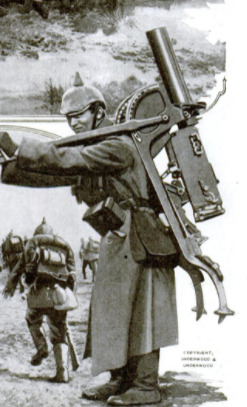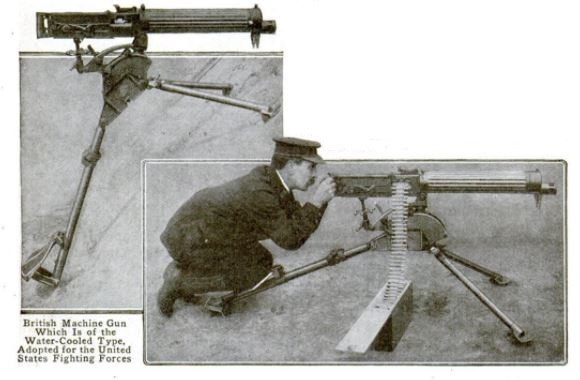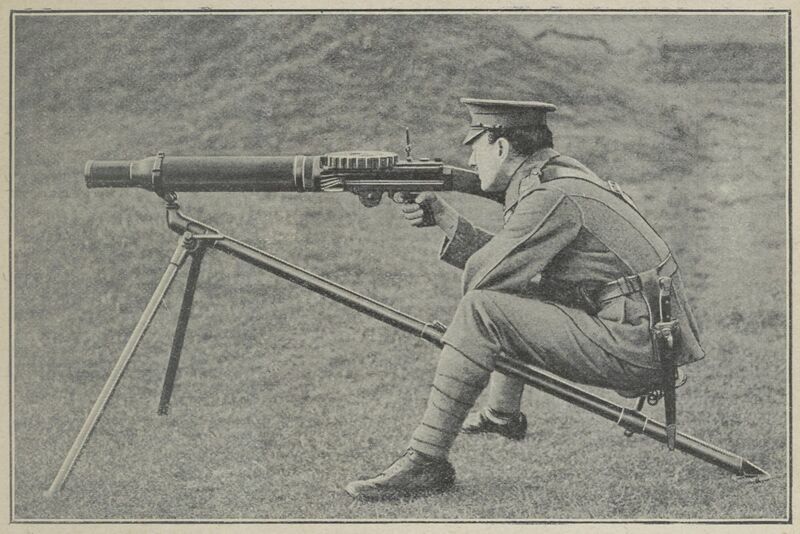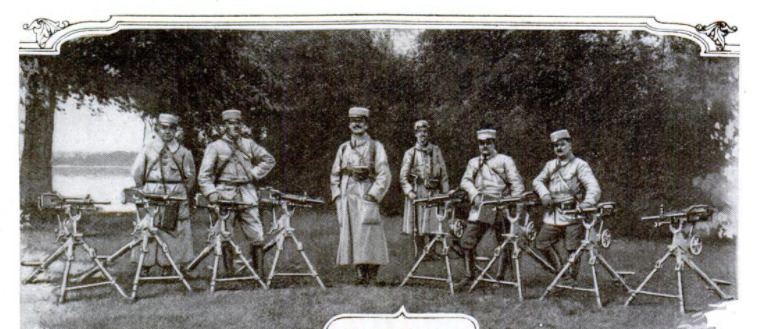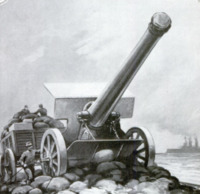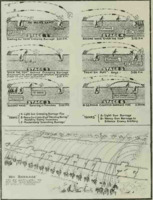Storms of Steel
Automatic fire
"Whatever happens we have got / the Maxim Gun, and they have not" wrote Hilaire Belloc in 1898, alluding to the technological superiority that allowed a few white colonizers to conquer the globe and to defeat much bigger indigenous armies . Decades of colonial successes were not enough, nonetheless, to change military tactics in depth: the machine gun (and the mechanization of war that it brought about) was perfect for killing "hordes" of "savages", but it was not considered, at the beginning of the war, fully suitable for a "chivalrous" European conflict.
All the machine guns in operation during the first world war were based on the model invented by Hiram Maxim in 1883. The "Maxim Gun" used the recoil of the first shot to load the next bullet, granting a rate of fire that was unthinkable in previous models (such as the "Gatling Gun" used during the U.S. Civil War).
Every army had its own variant of the Maxim's machine gun. The Germans had the Machineengewehr 08, the Italians the Fiat-Revelli, French and Americans the Hotchkiss, the British the Vickers. Their specifics were very similar. A machine gun during World War I could, in theory, shoot between 500 and 600 bullets a minute at a distance that varied between 2 and 4 kilometers.
In reality the operators fired in short flurries in order to avoid overheating and the precision of their aim significantly decreased beyond 1000 meters. The bullets, from 6.5 to 8 mm in caliber, were loaded through magazines or belts and the barrel was cooled down with air or water. Given its weight and the difficulties in its operation (the great quantity of munitions it needed, the fragility of its mechanism, the cooling gear) the machine gun is, at the beginning of the war, an exclusively defensive weapon. The necessity to use automatic fire on the offensive, without a tripod, and to mount the weapon on planes, brought to the adoption of lighter models, such as the Lewis Gun, and to the invention of the first sub-machine guns, around 1917.
The machine gun forced the soldiers to take shelter in the ground. Without it defending the artillery the military tactics of the time would have been perfectly adequate to break the stalemate. Without the machine gun modern trench warfare would not have existed.
Artillery
World War I artillery was the result of important innovations that happened during the nineteenth century. Nitrocellulose, used instead of gunpowder, allowed a longer range and did not generate smoke that would have revealed the position of the cannon. New sealing mechanisms of the barrel and new recoil amortization systems granted a faster rate of fire.
Before the war artillery was mostly used with direct fire (from the cannon mouth to the target in a straight line), but trench war imposed indirect fire (an arch parable towards targets that were not seen by the attackers). This meant on the one hand the construction of bigger and bigger cannons, especially howitzers and mortars; on the other it promoted the use of airplanes as a way to locate the targets, communicate their coordinates and verify their destruction.
The shells, at first mostly shrapnel (designed to fragment in mid-air with an antipersonnel function), soon evolved in detonating shells (designed to destroy fortifications with high explosives), incendiary shells and projectiles loaded with poison gas. The peculiar necessities of modern warfare lead to the invention of new weapons, such as anti-aircraft guns and the portable trench mortar.
Thanks to these innovations and to the static nature of the war, the artillery was the weapon that claimed more victims during the conflict (75% according to some estimates) and that, more than any other, forged the trench landscape and the soldiers’ experience. The whistle of the incoming projectiles, the roar of concentrated fire, the invisible and brutal death artillery could inflict had such an effect on the soldiers as to give birth to a “new” psychic pathology, “shell shock”.
Automatic fire in our database
-
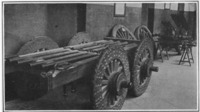
Machine-Gun
The Machine-Gun and Its Development -
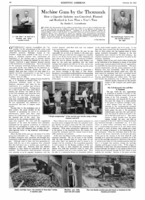
Machine Guns
Title: Machine Guns by the Thousands -
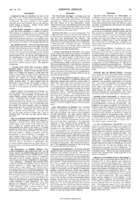
Machine gun on plane
A Machine Gun which Fires through a Hollow Propeller Shaft -
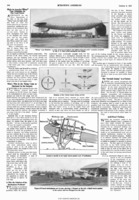
Battleplane machine gun
Is This the Solution of the Battleplane Problem?
Artillery in our database
-

Artillery Shell
A Shell With a Base-Cap That Precludes Premature Explosion -
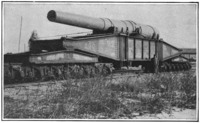
Sixteen-Inch Coast Defense Gun for Panama
Sixteen-Inch Coast Defense Gun for Panama -
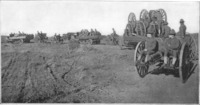
America's First Motor Truck Battery
America's First Motor Truck Battery -
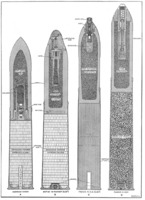
High-Explosive Shells
High-Explosive Shells. Ammunition Used in Modern Rapid Fire Guns

